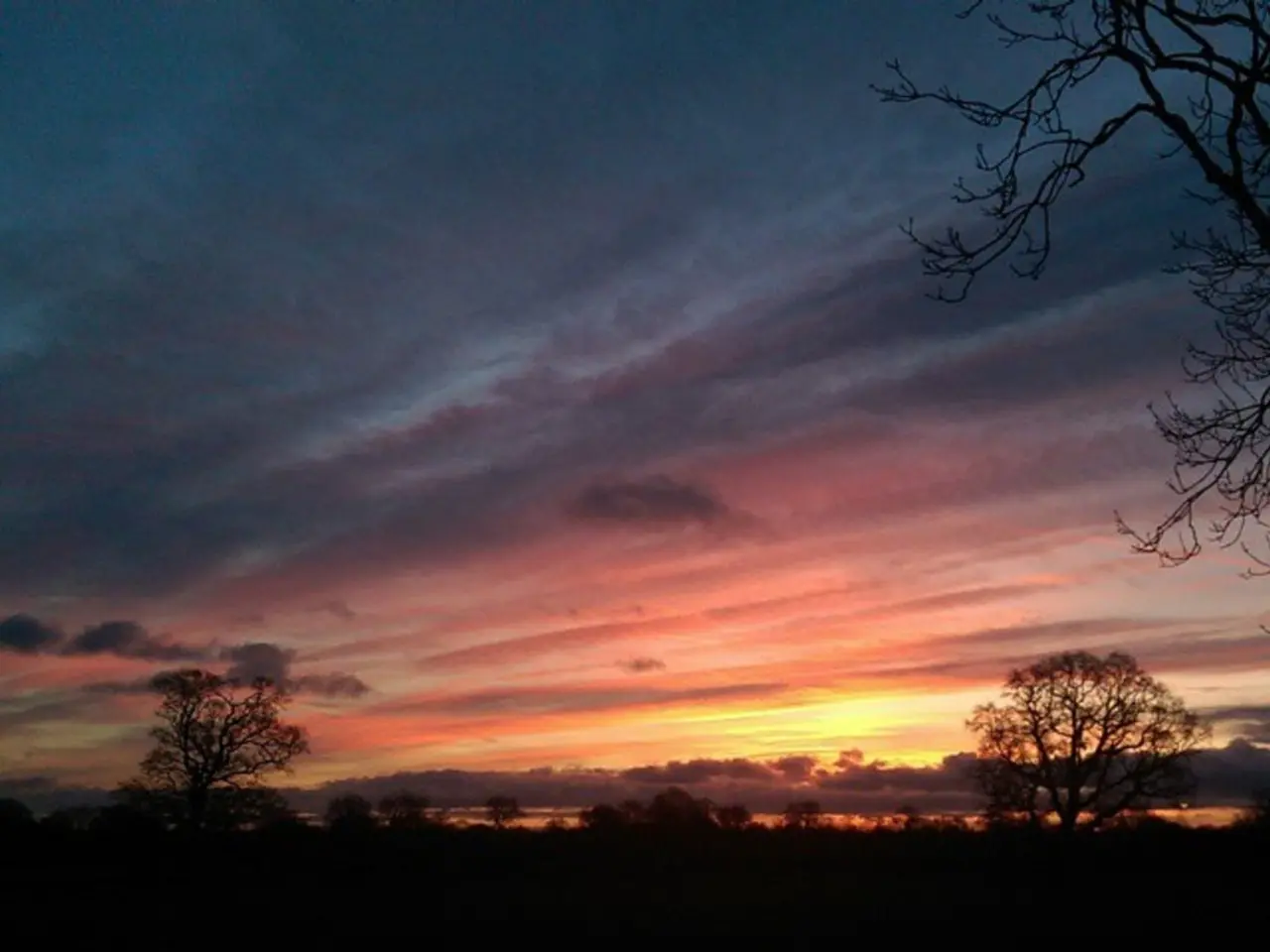Tips for Capturing Stunning Sunsets while Travelling
In the realm of travel photography, capturing breathtaking sunset images is a sought-after skill. Here are some tips to help you balance bright skies with dark landscapes, and elevate your sunset photography game.
To begin with, research your locations using apps like PhotoPills or Google Earth. Arrive early to test angles and avoid crowds. Varying your physical perspective as much as your creative vision can lead to unique and captivating compositions.
When it comes to camera settings, mastering them can transform golden hour captures from "nice" to "breathtaking". Switching to manual or aperture priority mode for consistent control during golden hour is recommended. Keep your ISO as low as possible to avoid noise, and balance shutter speed and aperture to properly expose highlights without losing shadow detail.
Dynamic shots thrive on contrast. For this reason, lower f-stops create dreamy foreground bokeh, while higher values keep entire landscapes crisp. Pairing your camera with a tripod and apps like Moment for manual control over exposure and focus further enhances your control.
Dynamic compositions can be achieved by positioning key elements along the lines or their intersections of the rule of thirds grid. Let jagged cliffs disrupt perfect symmetry to create tension, or align the horizon on the upper or lower third gridline to spotlight fiery skies or emphasize reflective lakes or textured sands.
Experimentation pays off. Try underexposing to create silhouettes against fiery skies, or overexpose slightly to reveal hidden textures in foreground elements. For flares, try a narrower aperture (f/8-f/16) and position the sun near the edge of your frame.
Balancing bright skies with dark landscapes can be achieved using graduated neutral density (GND) filters. These physical filters have a darkened top that you place over the bright sky to balance exposure between sky and land, preventing overexposure of the sky and underexposure of the landscape.
Long exposure techniques can add creative effects to the dark landscape by smoothing water or clouds, improving overall balance and mood. Using neutral density filters for long exposures during sunset further controls brightness and motion blur.
Post-processing can refine the balance further. Begin with exposure, contrast, and white balance adjustments, then selectively enhance the sky with tools like Sky AI to add depth and vibrance while ensuring natural tonal harmony between sky and landscape.
Lastly, careful metering is crucial. Check your metering mode-use spot or center-weighted metering for the brightest part of the sky. Enable highlight alerts to catch blown-out areas. For phones, try a pocket-sized Joby GorillaPod for flexible control. Set the white balance to "Cloudy" or "Shade" (around 6000-8000K) to enhance warm tones.
Start 30 minutes before sunset and stay up to 20 minutes after. Pair with faster shutter speeds to freeze moving clouds or water reflections. Use exposure bracketing or a graduated ND filter to avoid blown-out skies.
Combining GND filters, thoughtful exposure settings, creative long exposures, and selective editing will help you achieve well-balanced, dramatic sunset travel photos with striking skies and detailed landscapes. The rule of thirds can be used for intentional framing choices to transform ordinary twilight scenes into visual poetry.
Delve deeper into the locations where you wish to capture sunsets by utilizing apps such as PhotoPills or Google Earth, as this wisdom can assist you in selecting ideal spots that offer dynamic compositions. To complement your extensive research and photography skills, owning a tripod and apps like Moment can provide manual control over exposure and focus, contributing to the refinement of your travel lifestyle sunset photography game.




